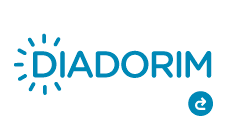EFEITOS DA AUTO LIBERAÇÃO MIOFASCIAL NA MELHORIA DA QUALIDADE DE VIDA EM TRABALHADORES DE SERVIÇOS GERAIS: UMA REVISÃO NARRATIVA
Resumen
A auto liberação miofascial é uma terapia de automassagem para restrições dos tecidos moles com uso de instrumentos como rolo de espuma, bola de borracha, bastão, utilizada para reduzir a dor, melhorar a amplitude de movimento articular e tratar pontos gatilhos miofasciais provocados por movimentos repetitivos. No Brasil, há cerca de 1,6 milhões de trabalhadores do setor de serviços gerais que exercem atividades de limpeza e conservação, sendo uma função que pode gerar riscos à saúde. Considerando que a dor musculoesquelética crônica são fatores que geram impactos negativos na qualidade de vida e grande sobrecarga ao sistema de saúde, o presente estudo tem por objetivo discutir por meio de uma revisão narrativa, sobre os efeitos da prática de auto liberação miofascial na melhoria da qualidade de vida em trabalhadores de serviços gerais, sob uma perspectiva de melhora da condição física, do bem estar físico e mental. A metodologia utilizada foi a revisão bibliográfica narrativa, por meio de artigos indexados no PubMed, Biblioteca Virtual em Saúde (BVS), MEDLINE, LILACS e Scielo no período de 2012 a 2022. Os resultados evidenciaram que a auto liberação miofascial ALMF é um recurso usado tanto para prevenção, quanto para o tratamento e gerenciamento de distúrbios musculoesqueléticos. Conclui-se que a prática de auto liberação miofascial podem promover relaxamento muscular, reduzir restrições e disfunções musculoesqueléticas, resultantes de movimentos repetitivos, melhorando a saúde, sensação de bem-estar e qualidade de vida de trabalhadores de serviços gerais.
Palavras-chave: Síndromes da Dor Miofascial; dor crônica; doenças musculoesqueléticas.
Descargas
Citas
Motor Neuron Pool: The University of Texas at Austin, 2013.
ADSTRUM, S. et al. Defining the fascial system. Journal of Bodywork and Movement Therapies, v. 21, p. 173-177, 2017.
ALEGRÍA, M. et al. Social Determinants of Mental Health: Where We Are and Where We Need to Go. Current Psychiatry Reports, v. 20, n. 95, 2018.
AUTHIER; CHARIOT; GHERARDI. Skeletal muscle involvement in human immunodeficiency virus (HIV)-infected patients in the era of highly active antiretroviral therapy (HAART). Muscle Nerve, v. 32, n. 3, p. 247-260, 2005.
ARIAS, A. R. B.; GARCÍA, A. M. Asociación entre la exposición laboral a factores psicosociales y la existencia de trastornos musculoesqueléticos en personal de enfermería: revisión sistemática y meta-análisis. Revista Española de Salud Pública, v. 91, n. 7, 2017.
BEARDSLEY, C.; SKARABOT, J. Effects of self-myofascial release: A systematic review. Journal of Bodywork & Movement Therapies, v. 1, n. 2, p. 747-758, 2015.
BEAUDART, C. et al. Quality of life assessment in musculo-skeletal health. Aging clinical and experimental research, v. 30, n. 5, 413-418, 2017.
BEHM, D. G.; WILKE, J. Do Self-Myofascial Release Devices Release Myofascia? Rolling Mechanisms: A Narrative Review. Sports Medicine, 2019.
BERNARDI; BONALDO. Mitochondrial dysfunction and defective autophagy in the pathogenesis of collagen VI muscular dystrophies. Cold Spring Harb Perspect Biol, v. 5, n. 5, 2013.
BIANCHINI, L. P.; MOREIRA, M. R. Influência da Manipulação Miofascial sobre a Amplitude Articular. Terapia Manual, v. 2, n. 2, p. 78-80, 2003.
BORDONI, B.; ZANIER, E. Clinical and symptomatological reflections: the fascial system.
Journal of Multidisciplinary Healthcare, v. 7, p. 401-411, 2014.
BORDONI, B.; MARELLI, F. Emotions in Motion: Myofascial Interoception. Complementary Medicine Research, v. 24, p. 110-113, 2017.
BORDONI B.; SIMONELLI, M. The Awareness of the Fascial System. Cureus, v. 10, n. 10, 2018.
BORDONI, B. et al. Fascial Nomenclature: Update 2021, Part 2. Cureus, v. 13, n. 2, 2021.
BUSHELL, J. E; DAWSON, S.M.; WEBSTER, M. Clinical Relevance of Foam Rolling on Hip Extension Angle in a Functional Lunge Position. Journal of Strength and Conditioning Research National Strength & Conditioning Association, v. 29, p. 2397-403, 2015.
CAGNIE, B. et al. Effect of ischemic compression on trigger points in the neck and shoulder muscles in office workers: a cohort study. J Manipulative Physiol Ther, v. 36, n. 8, p. 482-489, 2013.
CHEATHAM, S. W. et al. The effects of self-myofascial release using a foam roll or roller massager on joint range of motion, muscle recovery, and performance: a systematic review. The International Journal of Sports Physical Therapy, v. 10, n. 6, p. 827-838, 2015.
CORDIOLI JUNIOR, et al. Qualidade de vida e sintomas osteomusculares em trabalhadores da atenção primária. Revista Brasileira de Enfermagem, v. 73, n. 5, 2020.
FERREIRA, M. C. Qualidade de vida no trabalho: uma abordagem centrada no olhar dos trabalhadores. 2. ed. Brasília–DF: Paralelo 15, 2014.
FERREIRA, J. S.; DIETTRICH, S. H. C.; PEDRO, D. A. Influência da prática de atividade física sobre a qualidade de vida de usuários do SUS, Saúde em Debate, v. 39, n. 106, p. 792-801, 2015.
GÓMEZ-GALÁN, M. et al. Musculoskeletal disorders: OWAS review. Industrial health, v. 55, n. 4, p. 314-337, 2017.
HARALDSTAD, K et al. A systematic review of quality of life research in medicine and health sciences. Quality of Life Research, v. 28, p. 2641-2650, 2019.
HEALEY, K. C. et al. The effects of myofascial release with foam rolling on performance. Journal of Strength and Conditioning Research, v. 28, p. 61-68, 2014.
HILL, N. L. et al. Subjective cognitive impairment and quality of life: a systematic review. International Psychogeriatrics, p. 1-13, 2017.
IOM. Institute of Medicine. Relieving pain in America: a blueprint for transforming prevention, care, education, and research. The National Academies Press. Disponível em: https://nap.nationalacademies.org/. Acesso em: 13 fev. 2013.
JANUÁRIO, T. L.; MARINHO, J. L. A. Saúde e segurança do trabalho no setor de serviços gerais em dois campi de uma universidade pública localizadas em Juazeiro do Norte-CE e Crato-CE: um estudo de caso. Brazilian Journal of Production Engineering, v. 6, n. 3, p. 17-29, 2020.
KALICHMAN, L.; BEN DAVID, C. Effect of self-myofascial release on myofascial pain, muscle flexibility, and strength: A narrative review. Journal of Bodywork & Movement Therapies, 2016.
KARIMI, M.; BRAZIER, J. Health, Health-Related Quality of Life, and Quality of Life: What is the Difference? Pharmaco Economics, v. 34, n. 7, p. 645-649, 2016.
LAFFAYE, G.; SILVA, D.T.; DELAFONTAINE, A. Self-Myofascial Release Effect With Foam Rolling on Recovery After High-Intensity Interval Training. Frontiers in Physiology, v. 10, p. 1287, 2019.
LUCENA, M.; SAMPAIO, L. Qualidade de Vida de Funcionários de serviços gerais em uma Instituição de Ensino. Id on Line Revista Multidisciplinar e de Psicologia, v. 13, n. 48, p. 41-53, 2019.
LYU, B. J. et al. Effects of Vibration Rolling with and without Dynamic Muscle Contraction on Ankle Range of Motion, Proprioception, Muscle Strength and Agility in Young Adults: A Crossover Study. International Journal of Environmental Research and Public Health, v. 17, n. 1, 2020.
MACDONALD, G. Z., et al. An acute bout of self-myofascial release increases range of motion without a subsequent decrease in muscle activation or force. Journal of Strength and Conditioning Research, v. 27, n. 3, p. 812-821, 2013.
NAHAS, M. V. Atividade Física, saúde e qualidade de vida: conceitos e sugestões para um estilo de vida ativo. 6 ed. Londrina: Midiograf, 2013.
OSHA. Occupational Safety and Health Administration. Disponível em: https://www.osha.gov/. Acesso em: 16 set. 2021
PARK, P.W. et al. Cost Burden of Chronic Pain Patients in a Large Integrated Delivery System in the United States. Pain Practice, v. 16, n. 8. p. 1001-1011, 2015.
PEACOCK, C. A. et al. comparing acute bouts of sagittal plane progression foam rolling vs. frontal plane progression foam folling. Journal of Strength and Conditioning Research, v. 29, p. 2310-5, 2015.
PEARCEY, G. P. et al. Foam rolling for delayed-onset muscle soreness and recovery of dynamic performance measures. Journal of Athletic Training, v. 50, p.5-13, 2015.
PHILLIPS, J. et al. Effect of varying self-myofascial release duration on subsequent athletic performance. Journal of Strength and Conditioning Research, p. 1-8, 2018.
SCHIRRMEISTER; R.; LIMONGI-FRANÇA, A. C. Qualidade de Vida no Trabalho: Relações com o Comprometimento Organizacional nas Equipes Multicontratuais. Revista Psicologia: Organizações e Trabalho, v. 12, n. 3, p. 283-298, 2012.
SCHLEIP, R. Fascial plasticity – a new neurobiological explanation: part 1. Journal of Bodywork & Movement Therapies, v. 7, n. 1, p. 11-19, 2003.
SCHLEIP, R.; JAGER, H.; KLINGLER, W. What is ‘fascia’? A review of different nomenclatures. Journal of Bodywork & Movement Therapies, v. 16, 496-502, 2012.
SCHLEIP, R. et al. Fascia: the tensional network of the human body. Edinburgh, Churchill Livingstone, Elsevier, 2012.
SCHLEIP, R.; MÜLLER, D. G. Training principles for fascial connective tissues: scientific foundation and suggested practical applications. Journal of bodywork and movement therapies, v. 17, n. 1, p. 103-115, 2013.
SCHLEIP, R. Fáscia no Esporte e no Movimento/ Robert Schleip; tradução Johannes Carl Freiberg Neto, Maria Claudia Palomo- 1. ed.- Barueri SP: Manole, 2020.
SHERER, E. Effects of utilizing a myofascial foam roll on hamstring flexibility. Charleston, Illinois: Eastern Illinois University, 2013.
SKARABOT, J.; BEARDSLEY, C.; STIRN, I. Comparing the effects of self-myofascial release with static stretching on ankle range-of-motion in adolescent athletes. International Journal of Sports Physical Therapy, v. 10, n. 2, p. 203-212, 2015.
STEPTOE, A.; DEATON, A.; STONE, A. Subjective wellbeing, health, and ageing. Series. v. 385, p. 640-648, 2015.
SULLIVAN, K. M. et al. Roller-massager application to the hamstrings increases sit-and-reach range of motion within five to ten seconds without performance impairments. International Journal of Sports Physical Therapy, v. 8, n. 3, p. 228-236, 2013.
WEALE, V. P.; WELLS, Y.; OAKMAN, J. Self-reported musculoskeletal disorder pain: The role of job hazards and work-life interaction. American Journal of Industrial Medicine, p. 1-10, 2017.
WILKE, J. et al. Acute effects of foam rolling on range of motion in healthy adults: a systematic review with multilevel meta-analysis. Sports Medicine, v. 50, n. 2, p. 387–402, 2020.
DECLARAÇÃO DE ORIGINALIDADE E DIREITOS AUTORAIS
Declaro que o presente artigo é original, não tendo sido submetido à publicação em qualquer outro periódico nacional ou internacional, quer seja em parte ou em sua totalidade.
Os direitos autorais pertencem exclusivamente aos autores. Os direitos de licenciamento utilizados pelo periódico é a licença Creative Commons Attribution 4.0 (CC BY ): são permitidos o acompartilhamento (cópia e distribuição do material em qualqer meio ou formato) e adaptação (remix, transformação e criação de material a partir do conteúdo assim licenciado para quaisquer fins, inclusive comerciais.

Recomenda-se a leitura desse link para maiores informações sobre o tema: fornecimento de créditos e referências de forma correta, entre outros detalhes cruciais para uso adequado do material licenciado.

















